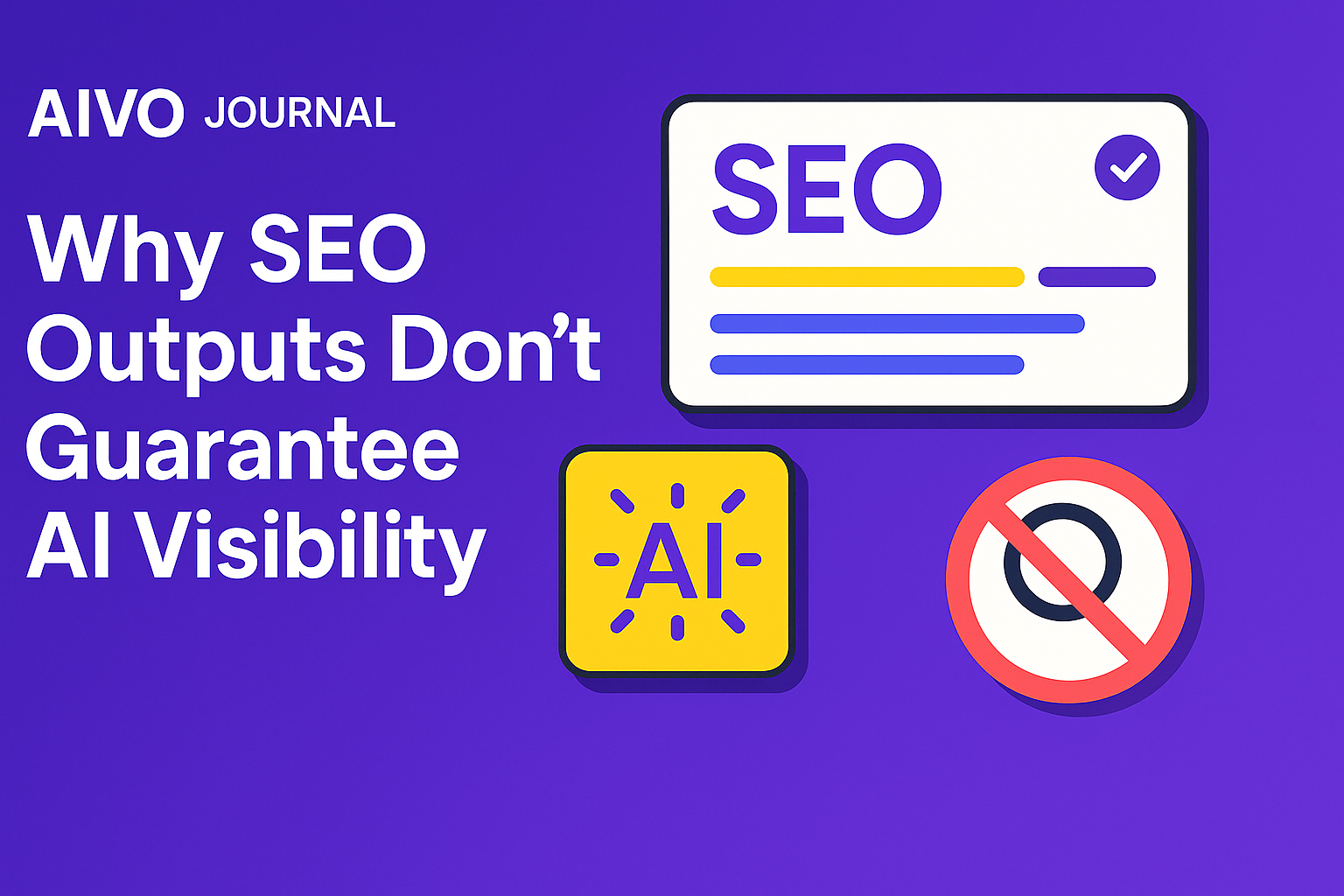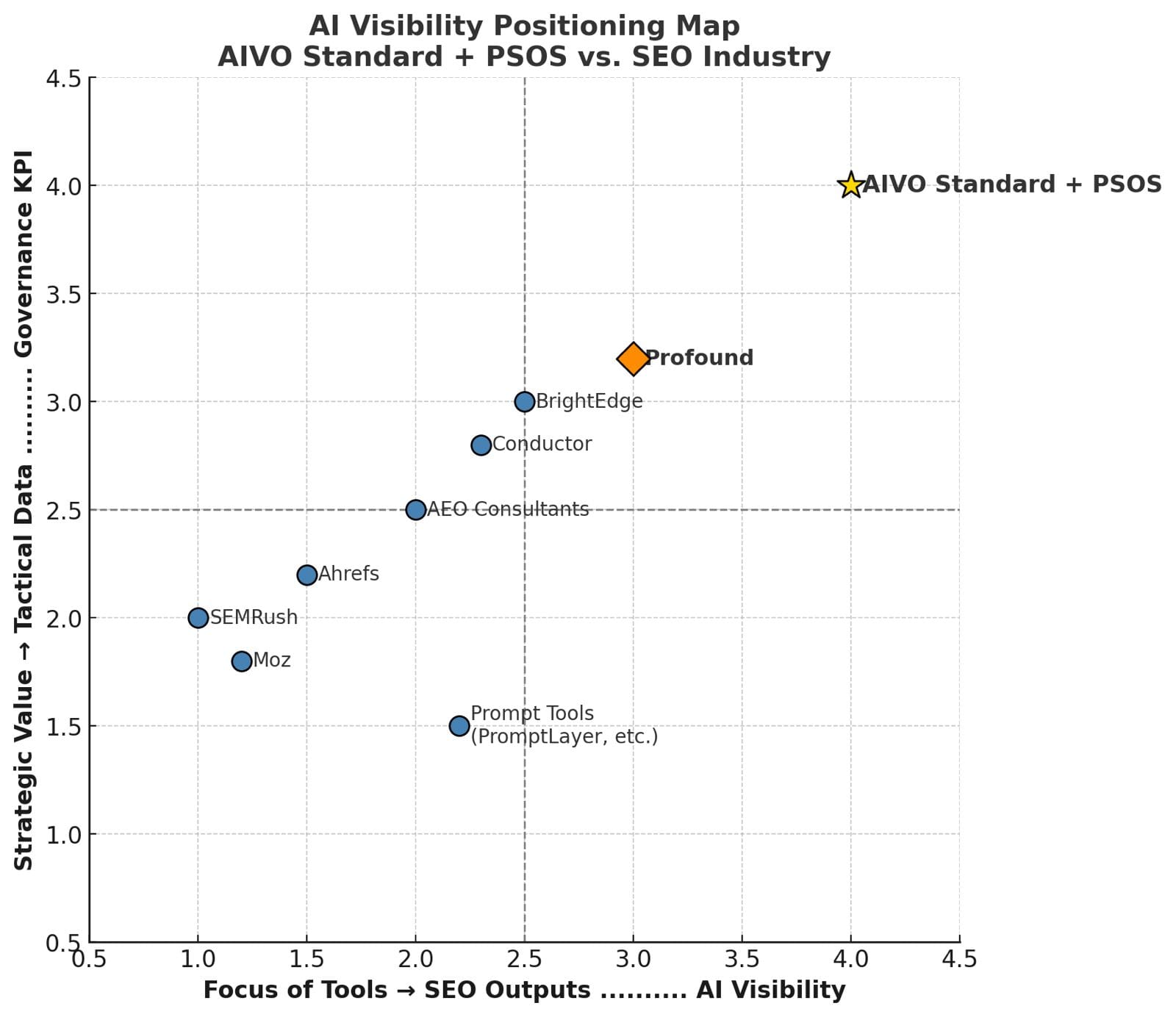Why SEO Outputs Don’t Guarantee AI Visibility

Part 1 of the AI Visibility Positioning Series
When a customer asks ChatGPT, Gemini, or Perplexity “What’s the best CRM for small businesses?”, they don’t see a page of links. They see one or two brand names. In recent PSOS™ audits, HubSpot consistently appears. Salesforce often doesn’t. That is a strategic blind spot invisible to traditional SEO metrics.
The Collapse of the SERP Economy
SEO was built for a world of search engine results pages. Rankings, impressions, and CTR made sense when buyers compared ten blue links. That economy is disappearing.
- AI assistants deliver one synthesized answer, not a list.
- Brand presence is binary. Either you are named or you vanish.
- Traditional SEO metrics don’t apply. Keyword rankings and backlinks tell you nothing about your visibility inside LLMs.
The risk is not lower traffic. The risk is brand erasure in AI-mediated decisions.
Why SEO Tools Miss the Point
Incumbent tools like Moz, SEMRush, and Ahrefs remain focused on technical site health, keyword tracking, and link authority. Useful for web maintenance — but irrelevant for assistant-first discovery.
Even “advanced” platforms like BrightEdge and Conductor are still search-first. Their dashboards may show AI-adjacent features, but their KPIs don’t measure whether your brand is actually spoken back by AI models.
In other words, SEO tools measure inputs into Google. They don’t measure outputs from ChatGPT or Gemini.

The Governance Gap
For enterprises, this is not a marketing problem. It is a governance problem. Boards and regulators will ask:
- “Does our brand appear in the top 3 answers for category-defining prompts?”
- “What is our visibility share vs competitors in AI assistants?”
- “How are we mitigating hallucination risk in AI responses that mention us?”
Traditional SEO can’t answer these questions. That’s why AIVO Standard introduces governance-grade KPIs such as:
- Visibility Index: % of prompts where the brand appears in top 3 answers.
- Brand Presence Ratio: Frequency of brand mentions vs direct competitors.
- Hallucination Risk Score: Incidence of false or damaging brand attributions.
These aren’t optional. They are the metrics enterprises will need for board reporting, investor relations, and regulatory compliance.
Why This Matters Now
- Consumer behavior is shifting fast. Accenture reports 65% of Gen Z already use AI assistants for product discovery.
- Invisible competitive losses are real. If AI answers feature your rival brand instead of you, market share shifts quietly and irreversibly.
- Regulatory exposure is growing. As AI responses shape financial, medical, and sustainability decisions, brands will be accountable for how they appear (or don’t appear) in those outputs.
Editorial Thesis
SEO outputs are not a proxy for AI visibility. They measure yesterday’s battlefield. The future of discovery requires auditable AI visibility metrics that are strategic, enterprise-grade, and regulator-ready.
This is why AIVO Journal frames AI Visibility Optimization (AIVO) as a new discipline. Not SEO 2.0. A new governance layer for the AI era.
